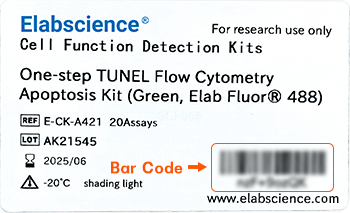DPP4/CD26 Polyclonal antibody (AN006030L)

For research use only.
| Verified Samples | Verified Samples in WB: Mouse lung, Mouse liver, Rat lung, Rat thymus, Rat liver |
| Dilution | WB 1:1000-1:2000 |
| Isotype | IgG |
| Host | Rabbit |
| Reactivity | Mouse, Rat |
| Applications | WB |
| Clonality | Polyclonal |
| Immunogen | Recombinant Human DPP4/CD26 protein expressed by Mammalian |
| Abbre | DPP4/CD26 |
| Synonyms | ADABP Protein, ADCP2 Protein, CD26 Protein, DPPIV Protein, Human, TP103 Protein, DPP, dipeptidylpeptidase, dipeptidyl-peptidase, dipeptidyl peptidase, T-cell activation antigen CD, adenosine deaminase complexing protein, DPP4, ADABP, ADCP2, CD26, DPPIV, TP103, Dipeptidyl peptidase IV, ADCP-2, dipeptidyl-peptidase 4, dipeptidyl peptidase 4, DPP IV, dipeptidylpeptidase 4, T-cell activation antigen CD26, adenosine deaminase complexing protein 2, dipeptidylpeptidase IV, Dipeptidyl peptidase IV (DPP IV) |
| Swissprot | |
| Calculated MW | 88 kDa |
| Observed MW |
120 kDa
The actual band is not consistent with the expectation.
Western blotting is a method for detecting a certain protein in a complex sample based on the specific binding of antigen and antibody. Different proteins can be divided into bands based on different mobility rates. The mobility is affected by many factors, which may cause the observed band size to be inconsistent with the expected size. The common factors include: 1. Post-translational modifications: For example, modifications such as glycosylation, phosphorylation, methylation, and acetylation will increase the molecular weight of the protein. 2. Splicing variants: Different expression patterns of various mRNA splicing bodies may produce proteins of different sizes. 3. Post-translational cleavage: Many proteins are first synthesized into precursor proteins and then cleaved to form active forms, such as COL1A1. 4. Relative charge: the composition of amino acids (the proportion of charged amino acids and uncharged amino acids). 5. Formation of multimers: For example, in protein dimer, strong interactions between proteins can cause the bands to be larger. However, the use of reducing conditions can usually avoid the formation of multimers. If a protein in a sample has different modified forms at the same time, multiple bands may be detected on the membrane. |
| Cellular Localization | Cell junction, Cell membrane, Cell projection, Membrane, Secreted |
| Tissue Specificity | Expressed specifically in lymphatic vessels but not in blood vessels in the skin, small intestine, esophagus, ovary, breast and prostate glands. Not detected in lymphatic vessels in the lung, kidney, uterus, liver and stomach (at protein level). Expressed in the poorly differentiated crypt cells of the small intestine as well as in the mature villous cells. Expressed at very low levels in the colon. |
| Concentration | 1 mg/mL |
| Buffer | PBS with 0.05% Proclin300, 1% protective protein and 50% glycerol, pH7.4 |
| Purification Method | Antigen Affinity Purification |
| Research Areas | Immunology, Cell Biology, Stem Cells, Cancer, Metabolism |
| Conjugation | Unconjugated |
| Storage | Store at -20°C Valid for 12 months. Avoid freeze / thaw cycles. |
| Shipping | The product is shipped with ice pack, upon receipt, store it immediately at the temperature recommended. |
| background | Dipeptidyl peptidase-4 (DPP4) or adenosine deaminase complexing protein 2 (ADCP 2) or T-cell activation antigen CD26 is a serine exopeptidase belonging to the S9B protein family that cleaves X-proline dipeptides from the N-terminus of polypeptides, such as chemokines, neuropeptides, and peptide hormones. The enzyme is a type II transmembrane glycoprotein, expressed on the surface of many cell types. It is also present in serum and other body fluids in a truncated form (sCD26/DPPIV). The soluble CD26 (sCD26) as a tumour marker for the detection of colorectal cancer (CRC) and advanced adenomas. As both a regulatory enzyme and a signalling factor, DPP4 has been evaluated and described in many studies. DPP4 inhibition results in increased blood concentration of the incretin hormones glucagon-like peptide-1 (GLP-1) and gastric inhibitory polypeptide (GIP). This causes an increase in glucose-dependent stimulation, resulting in a lowering of blood glucose levels. Recent studies have shown that DPP4 inhibitors can induce a significant reduction in glycosylated haemoglobin (HbA(1c)) levels, either as monotherapy or as a combination with other antidiabetic agents. Research has also demonstrated that DPP4 inhibitors portray a very low risk of hypoglycaemia development, and are a new pharmacological class of drugs for treating Type 2 diabetes. |
Other Clones
{{antibodyDetailsPage.numTotal}} Results
-
{{item.title}}
Citations ({{item.publications_count}}) Manual MSDS
Cat.No.:{{item.cat}}
{{index}} {{goods_show_value}}
Other Formats
{{formatDetailsPage.numTotal}} Results
Unconjugated
-
{{item.title}}
Citations ({{item.publications_count}}) Manual MSDS
Cat.No.:{{item.cat}}
{{index}} {{goods_show_value}}
-
IF:{{item.impact}}
Journal:{{item.journal}} ({{item.year}})
DOI:{{item.doi}}Reactivity:{{item.species}}
Sample Type:{{item.organization}}
-
Q{{(FAQpage.currentPage - 1)*pageSize+index+1}}:{{item.name}}





